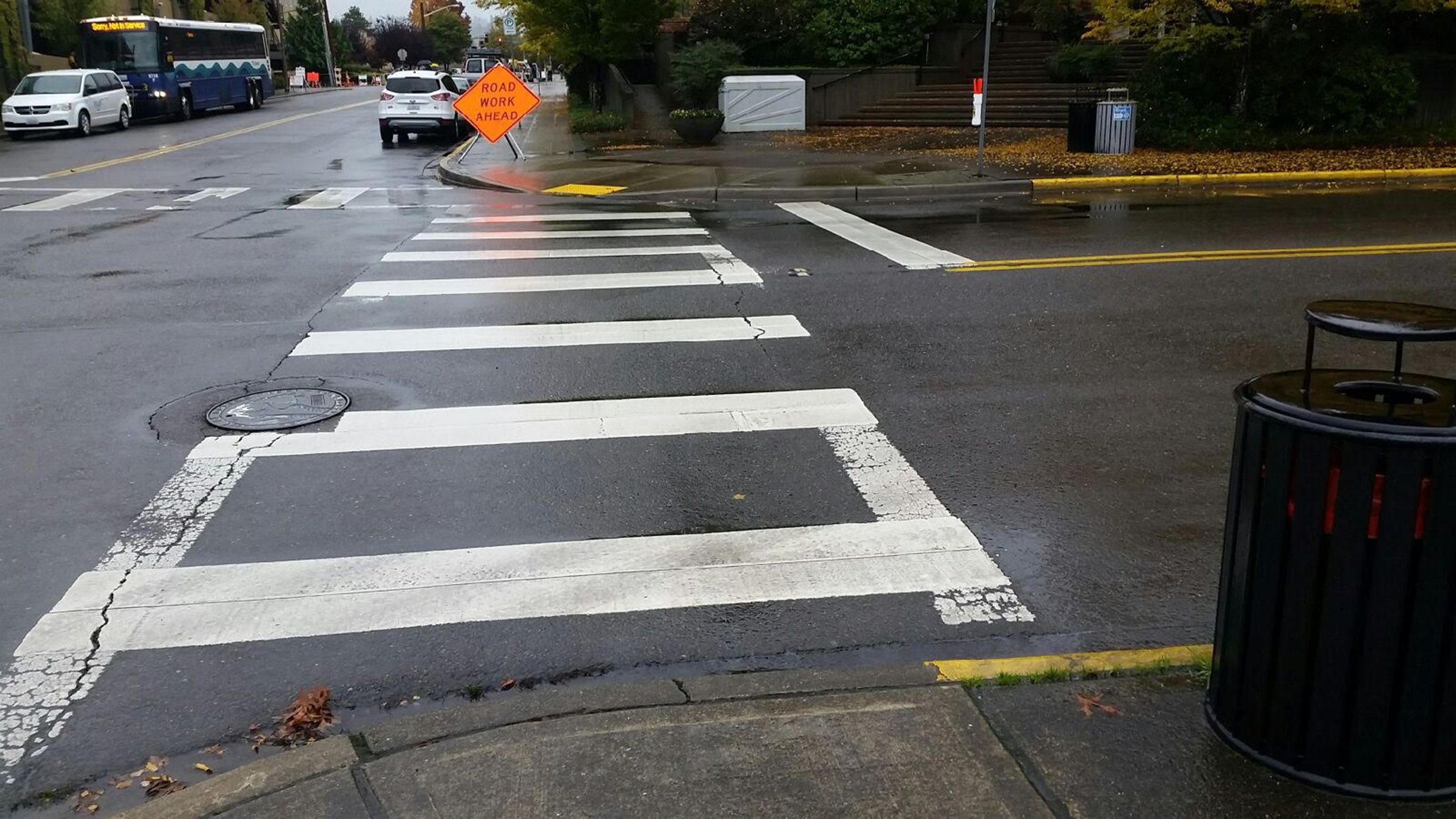Street engineers working for the City of Auburn and in other cities hear it a lot from residents: “We need a crosswalk right there.”
Even when the asker is talking about a pedestrian crosswalk that is already a legal crosswalk.
Happens many, many times a year, Pablo Para, a traffic safety engineer for the City of Auburn, told City officials Monday.
“Unfortunately, more often that not, we don’t give them the answer they are looking for, which leads us to the age-old question: to mark or not to mark?” Para said.
So, how do engineers decide?
For starters, there’s nothing arbitrary about the process.
In the main, engineers bundle up the many factors they need to consider and put them to the test of two exacting documents: the 2005 Federal Highway Administration report; and the Federal Manual on Uniform Traffic Control Devices.
The main takeaway from both documents, Para said, is that by itself, marking crosswalks does not result in improved safety. Indeed, he said, it may do more harm than good.
“In fact on multi-lane roads and higher speed roadways, (the documents) actually indicated a higher chance of having collisions. If it’s not done right, and we don’t consider all the appropriate issues, we could be creating a situation where we actually make people less safe.
“That’s why we take a long time in reviewing some of these requests; there are a lot of factors to consider,” Para added.
A little background
There are three basic types of crosswalks: at controlled locations; at designated school zone crossings; and at uncontrolled locations.
Unless marked “no crossing” or something like it, Para continued, every roadway intersection with a marked crossing, every marked mid-block crossing, every intersection with traffic signals or stop signs, every school zone marked with flashing lights, is a legal crosswalk.
Among that set: uncontrolled locations, shorthand for every other intersection where there is no signal.
Generally, unless the two documents cited above or traffic reports say they should not be marked, Auburn’s traffic safety experts will mark a crosswalk.
Each year, Para and his cohorts assess existing and new crosswalks with respect to traffic collision reports, looking for factors that have caused accidents and what can be done to fix things. Their assessment considers community requests and capital and development projects, too.
“We make designations based on the collision analysis and a few other factors, including: the number of lanes on the road to be crossed; the presence of an existing media island or pedestrian refuge; how many pedestrians cross during the day; the actual operating speeds on the road; sight distance; how many cars are coming at different hours of the day; and always, street lighting.”
These are among the factors engineers take to the reports and subject to their many charts and explanations.
Rob Roscoe, Human Resource Management director for the City of Auburn, said marked intersections are not always the answer people may think they are.
“One thing I can tell you is crosswalks do not stop vehicles, they don’t stop a car. And studies have shown that when you put in a crosswalk, it can give the user a false sense of security,” Roscoe said. “So, it’s very important that when we do put in a crosswalk we listen to our engineering staff as to why we are doing what we are doing, making sure there are warrants and justifications for the installation and the design of it. Because when there is an accident, there is a good probability we’ll get a claim for damages as a result of that accident.”



